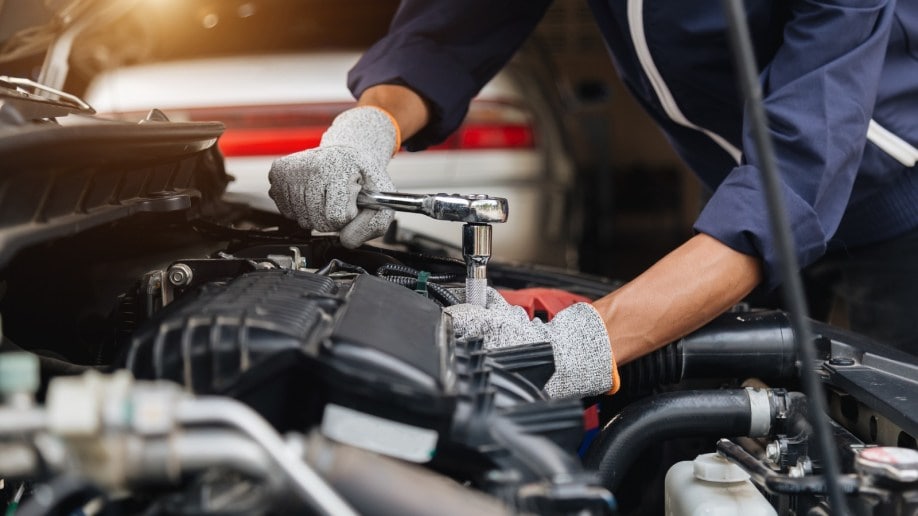7 Essential Tips for Electric Car Power Steering Repair
7 essential tips for electric car power steering repair: Check for fluid leaks, inspect the power steering belt, ensure proper fluid levels, replace damaged hoses or components, diagnose and repair electrical issues, bleed the power steering system, and test the steering function before driving. Electric car power steering systems require regular maintenance and repair to ensure optimal performance and safety.
This article provides seven essential tips to help you successfully address power steering issues in your electric vehicle. From checking for fluid leaks and inspecting belts to diagnosing electrical problems and testing the steering function, these tips will guide you through the repair process.
By following these recommendations, you can keep your electric car’s power steering system in top shape and enjoy a smooth and effortless driving experience.

Credit: www.kbb.com
Choosing The Right Repair Shop
When it comes to electric car power steering repairs, selecting the right repair shop is crucial. Here are essential factors to consider when choosing a repair shop for your electric car power steering system:
Certification And Experience
- Look for a repair shop that is certified to work on electric vehicles.
- Experience in electric vehicle repairs is vital for ensuring a thorough and accurate diagnosis.
Specialization In Electric Car Steering Systems
- Choose a repair shop that specializes in electric car steering systems for expertise.
- Specialized knowledge ensures efficient and reliable repair services specific to electric vehicles.
Diagnosing The Problem
When it comes to electric car power steering repair, diagnosing the problem accurately is crucial. By identifying the root cause of any issues, you can effectively address the problem and prevent further damage to your vehicle. In this section, we will explore some essential tips for diagnosing common power steering problems in electric cars.
Recognizing Common Issues
To effectively diagnose power steering problems in your electric car, you should be familiar with the common issues that can arise. Some signs that indicate a problem with your power steering system include:
- Difficulty steering or stiff steering wheel:
- Whining or groaning noise when turning:
- Steering wheel vibration:
- Leaking power steering fluid:
- Intermittent loss of power steering:
- Power steering warning light is illuminated on the dashboard:
If you notice any of these issues, it is important to take action promptly to prevent further damage to your electric car’s power steering system.
Using Diagnostic Tools
To accurately diagnose power steering problems in electric cars, specialized diagnostic tools can be incredibly helpful. These tools allow you to access and interpret the data from your car’s power steering system. Some commonly used diagnostic tools for electric cars include:
- OBD-II Scanner:
- Power Steering Pressure Tester:
- Power Steering Pulley Puller:
- Power Steering Pump Tester:
By using these diagnostic tools, you can gather valuable information about your power steering system, such as pressure levels, fluid quality, and any potential faults or malfunctions.
Remember, accurate diagnosis is the key to effective power steering repair in electric cars. By recognizing common issues and utilizing diagnostic tools, you can quickly identify and address any problems with your electric car’s power steering system.
Understanding Electric Power Steering Systems
Electric power steering systems have become increasingly popular in modern vehicles due to their efficiency and comfort. Unlike traditional hydraulic power steering systems, electric power steering systems operate using an electric motor instead of relying on fluid pressure. This allows for more precise control and eliminates the need for maintenance associated with fluid leaks or pump failures.
Component Overview
Electric power steering systems consist of several key components that work together to provide seamless steering assistance. These components include:
- Electric Motor: The electric motor is the heart of the power steering system, generating the necessary torque to assist in turning the wheels.
- Steering Column: The steering column transmits the driver’s input to the electric motor, allowing for fluid steering control.
- Torque Sensor: The torque sensor measures the force applied to the steering wheel, providing feedback to the electric motor for appropriate assistance.
- Electronic Control Unit (ECU): The ECU acts as the brain of the power steering system, receiving input from various sensors and adjusting the level of assistance accordingly.
- Wiring Harness: The wiring harness connects the different components of the power steering system, ensuring efficient communication between them.
Functioning Principles
The electric power steering system operates on two main principles:
- Speed Sensing: The system adjusts the level of assistance based on vehicle speed. At lower speeds, more assistance is provided to make steering easier during parking and maneuvering. As the vehicle gains speed, assistance decreases to provide a more natural, responsive feel to the driver.
- Driver Input Sensing: The system constantly monitors the torque applied to the steering wheel by the driver. It intelligently adjusts the assistance level, providing more or less support depending on the force applied. This helps enhance driver control and reduces hand fatigue.
By utilizing these principles, electric power steering systems offer superior control, improved fuel efficiency, and reduced maintenance requirements compared to hydraulic power steering systems.
Credit: www.toyotagtturbo.com
Replacing Faulty Components
If you notice issues with your electric car’s power steering, it’s crucial to identify failed parts promptly to prevent further damage.
Identifying Failed Parts
Use diagnostic tools to pinpoint the faulty components accurately before proceeding with any repairs.
Selecting High-quality Replacements
- Opt for OEM or reputable aftermarket parts to ensure compatibility and reliability.
- Refer to the manufacturer’s specifications when choosing replacement components for your electric car’s power steering system.
Maintenance Practices
When it comes to maintaining an electric car’s power steering system, it’s essential to follow proper maintenance practices. By ensuring regular inspections, fluid checks, and other essential steps, you can keep your electric car’s power steering in top condition. Here are some essential tips for power steering repair, focusing on maintenance practices.
Regular Inspections
Regular inspections are crucial to identify any potential issues with the power steering system. Inspect the power steering components, including hoses, belts, and the power steering pump, for any signs of wear or damage. Look for leaks in the power steering fluid reservoir and hoses.
Fluid Checks And Replenishment
Regularly check the power steering fluid level and quality. Low or contaminated fluid can lead to power steering issues. Use the manufacturer-recommended fluid and ensure it is at the proper level. If necessary, replenish or replace the fluid to maintain optimal performance of the power steering system.
Keeping up with these maintenance practices will help prevent potential power steering problems and ensure a smooth, responsive driving experience with your electric car.

Credit: in.pinterest.com
Frequently Asked Questions On 7 Essential Tips For Electric Car Power Steering Repair
How Do You Fix Hard Electric Power Steering?
To fix hard electric power steering, check for low fluid levels or leaks. Inspect the power steering pump and belt for issues. Look for any damaged hoses or connections. If the problem persists, seek professional assistance for diagnostics and repair.
How Do You Maintain An Electric Power Steering System?
To maintain an electric power steering system, regularly check fluid levels, inspect for leaks, and monitor system for any unusual noises. Follow manufacturer’s recommended maintenance schedule and consult a professional if any issues arise.
What Fails In Electric Power Steering?
The electric power steering can fail due to issues with the motor, sensor, or wiring.
What Are 3 Disadvantages Of Electric Power Steering?
Three disadvantages of electric power steering include limited feel and feedback from the road, potential for electrical malfunctions, and higher cost compared to hydraulic systems.
Conclusion
Incorporating these essential tips will help you navigate electric car power steering repairs efficiently. Stay proactive and informed to ensure your vehicle’s performance and safety. Trust your instincts and remember, proper maintenance is key to prolonging the life of your electric car’s steering system.
Drive safe!

